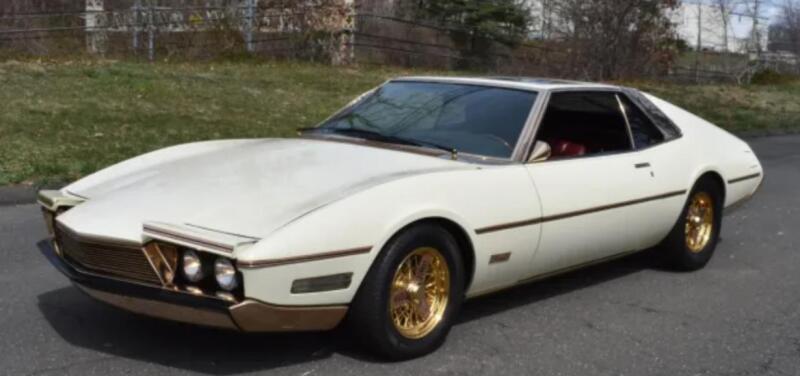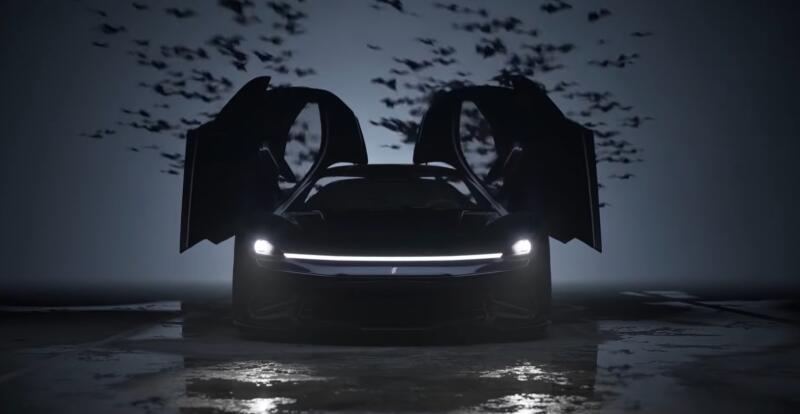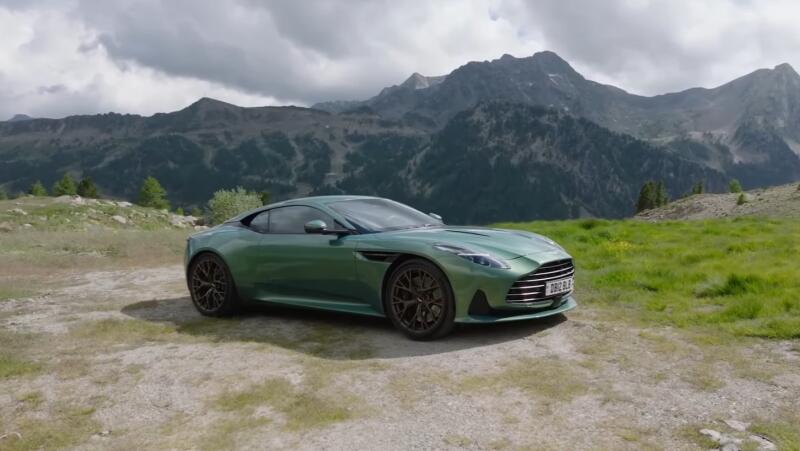Is this model really that bad? Or, maybe, the Germans are just "mad with fat"? At that time, I already knew the answer to this question, because back in the early 90s I visited the then GDR and saw this model with my own eyes. Moreover, a couple of times I had to be on duty in the parking lot of cars belonging to Soviet officers. In addition to various Zhiguli and Mercedes produced in the late 70s, there were also Golfs.
 Modest but cozy interior. Photo: youtube.com
Modest but cozy interior. Photo: youtube.comOf course, this car with rather modest parameters looked rather poor against the backdrop of powerful and chic-designed brothers. However, to the unassuming Soviet eye, things looked a little different. Let and unsightly, but still a foreign car. In addition, it is very unpretentious and reliable. And this was more than enough for the realities of 30 years ago.
"People's car" for undemanding buyers
Although we are used to the fact that in Europe everyone lives in a big way, there are also poor people there. And the mentality of people in those parts is such that even the unemployed should have a personal car. Or just a person who currently has a very modest (by German, for example, standards) income. It was for such people that this factory model was designed. Another goal was to increase the level of sales through inexpensive but reliable cars.
Volkswagen Golf 1974, along with another factory model - Passat, which appeared a year earlier, became a saving straw for the German concern. They had to revive the volume of sales and bring the company out of the crisis.
The situation developed in such a way that the sensation that the legendary "Beetle" made in the early 70s came to naught. The sales of automotive products were getting lower every year, causing significant losses to the entire Volkswagen AG concern. There was an urgent need for a fast, reliable and inexpensive version of the car, designed to save the automaker from decline.
In fact, the Golf became the successor for the Beetle. Although the release of the latter lasted two years longer than the base model Golf of the first generation. At the same time, other modifications have significantly outlived their founder. For example, convertibles, the number of which approached 389 thousand pieces, were produced at the Karmann plant until the beginning of the summer of 1993. The Caddy pickup truck, based on the first generation Golf, turned out to be an amazing long-liver.
 Reliable and inexpensive "savior" of the concern. Photo: youtube.com
Reliable and inexpensive "savior" of the concern. Photo: youtube.com94 thousand of these pickups were assembled by the Sarajevo plant. Perhaps they would have turned out much more, but since 1992, due to the war and the political situation in the country, the Serbian company has stopped producing German pickups. In the US, production lasted a year longer. This made it possible to exceed the Yugoslav figures by more than two times.
The Republic of South Africa still became the record holder. At the local facilities, first-generation pickup trucks were produced right up to 2007. However, for African or Latin American countries, this is not something outlandish. The modest wealth and conservatism of local buyers encourages the production of outdated, but retained demand in these countries, models.
But the Africans produced the 5-door Citi for another two years. So the total production time at the facilities of the plant in South Africa of various modifications of the first generation Golf lasted a whole quarter of a century! In order for the outdated design to at least slightly correspond to the spirit of the time, later the car began to be assembled with updated parts:
✅ dashboard from Skoda Fabia
✅ modern headlights
✅ other elements of external design
Of course, this process also had another side: some spare parts were simply no longer available due to the cessation of the production of an obsolete model at the main production. One way or another, but in Africa they got out and for many years offered their customers outdated, but reliable and beloved designs.
Rescue models in cramped circumstances
The buying rush of the 50s and 60s greatly weakened the concern's management. Therefore, the desire to “rest on our laurels” turned out to be too great. Or maybe it was about conservatism and unwillingness to keep up with the times? One way or another, but the position of the then head of Volkswagen AG, Heinrich Nordhoff, to give priority to air-cooled rear-wheel drive designs led the situation to a standstill.
 The classic hatchback is a child of its time. Photo: youtube.com
The classic hatchback is a child of its time. Photo: youtube.comDemanding customers of the late 60s already wanted front-wheel drive. Moreover, Italian competitors at that time had several models with this layout. It seems that the German company, once successful, was gradually losing not only external, but also internal positions. Save the situation instructed the new leader Kurt Lotz. He insisted on drastic updates:
✅ water cooled
✅ front wheel drive
✅ transverse engine
✅ new company development program
After several years of research and improvements, a new model has appeared, named after the warm current of the Gulf Stream. Just as it brings warmth, peace and prosperity to Europe, the new car had to pull the concern out of the bottom, on which it began to sink. And Volkswagen Golf coped with the assigned task in the best possible way. The fact that difficult times have come is confirmed by the compilation of a new car by common efforts:
✅ technical solutions from Auto Union
✅ design developments from NSU
✅ power plants from Audi
Putting it all together, the 1969 project EA 276 grew five years later into the super-successful Golf that topped the German new car registration statistics for many years. Well, as you remember, he settled on the South African assembly line for as much as 25 years.
Technical features and reasons for the success of the Volkswagen Golf
ItalDesign, represented by Giorgetto Giugiaro, provided a simple yet original body design. The decision on the transverse arrangement of the power unit gave maximum ergonomics. The low price attracted the attention of buyers who were constrained in their means to the model. But all these facts were not the main reason for the Golf's success.
It was an event that has developed since 1973 - the global fuel crisis. It was it that provided the car with persistent interest from buyers for many years. The thing is that the first engines of the model with a volume of 1,1 / 1,5 liters (50 / 70 hp) proved to be very economical. So the power unit of a smaller volume had fuel consumption in the range of 5-6 l / 100 km. Agree, the best offer during the oil crisis.
 He could easily move even where there is no asphalt. Photo: youtube.com
He could easily move even where there is no asphalt. Photo: youtube.comBrought demand to the highest point of reliability tests conducted over two and a half months on the American mainland. They included 30,5 thousand km from the northernmost point to Tierra del Fuego and showed the new car from the best side. Now it has been successful on both sides of the ocean, making it one of the most popular front-wheel drive hatchbacks.
Development of the model and its further generations
The miracles of economy were also demonstrated by the Golf Diesel, which appeared in September 1976 - approx. 5 l / 100 km. Its initial power was 50 liters. With. Over time, thanks to the turbocharger, it was increased by twenty units.
But the most powerful modification was the 110-horsepower Golf GTI. For this reason, it was provided with a vacuum brake booster, a sports steering wheel, wide tires and exterior design changes that increase its streamlining. In 1982, a 1,8-liter, 112-horsepower engine began to be installed on this modification.
 GTI is the most powerful in the first generation. Photo: youtube.com
GTI is the most powerful in the first generation. Photo: youtube.comThe Germans have not forgotten about the conservative segment of the market. For such buyers, the VW Jetta appeared at the end of the summer. It was offered with a two- or four-door body. The Jetta gained particular popularity among North American buyers, where sedan-type bodies have always been loved.
The initial success prompted the management of the concern to start producing the second series of the model in 1983. Production of the eighth generation Golf (since 2019) continues today. But returning to the comparison with the "Zaporozhets" I will say one thing. Getting into our country, this car was quoted above our "Zhiguli". I think further comments are unnecessary.










